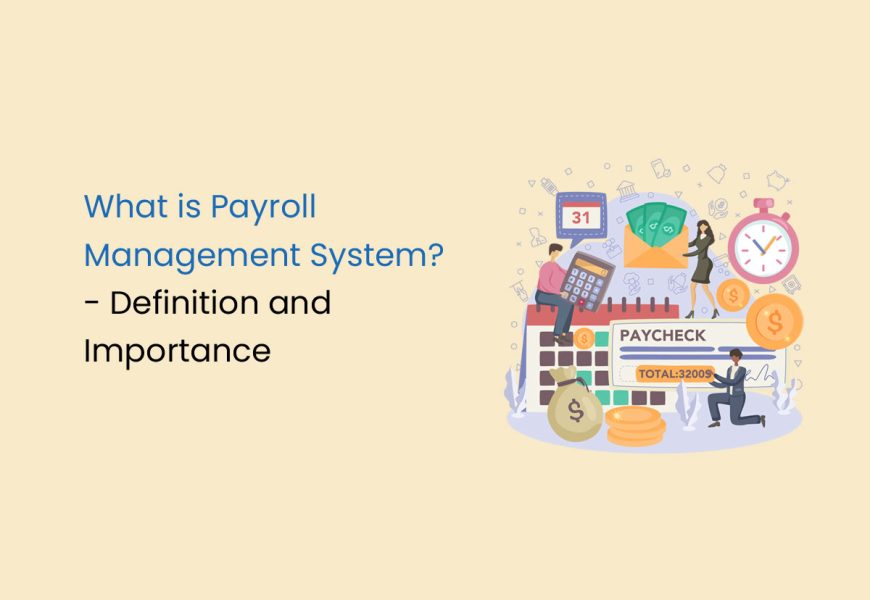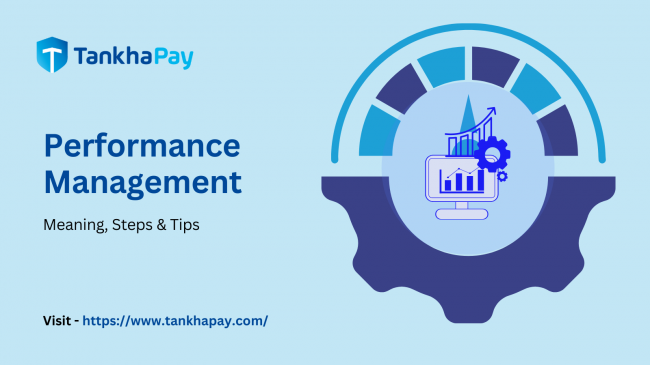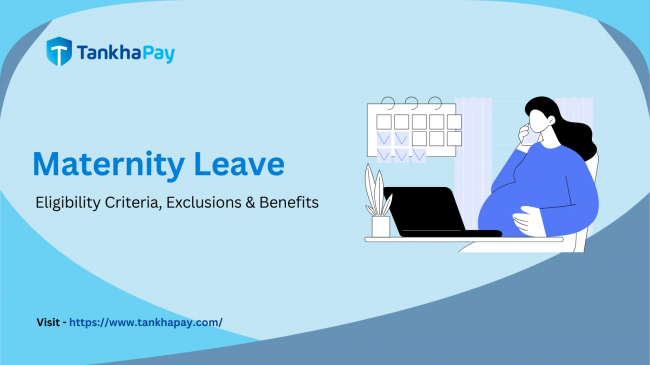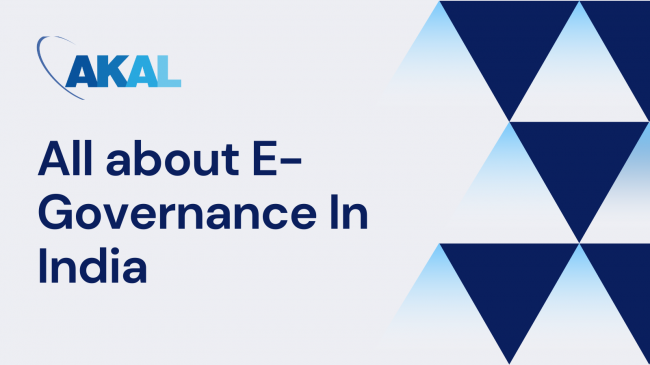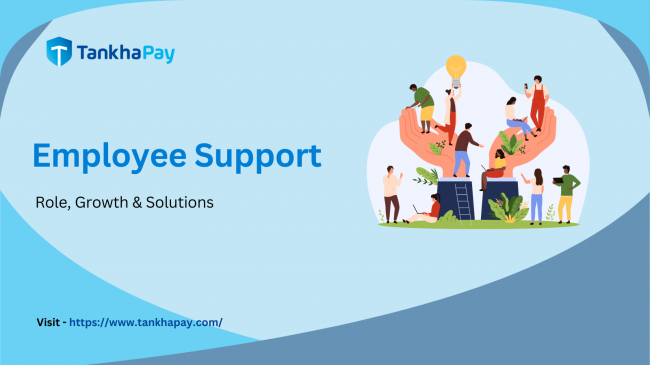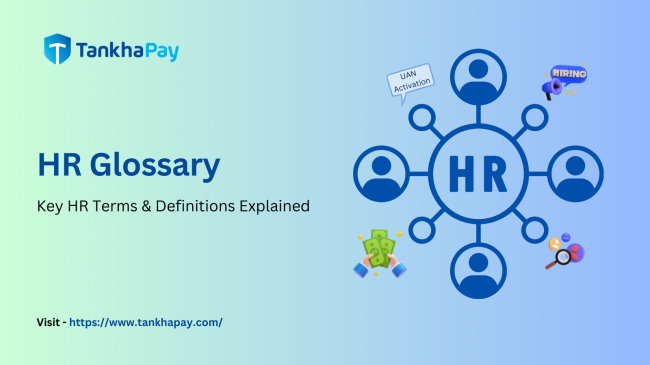Payroll management is an important function for any business. It ensures that employees are paid correctly and on time while staying in compliance with regulations. Efficient payroll processes can greatly improve a company's productivity, employee morale, and financial stability.
This content discusses payroll management, its definition, benefits, processes, and methods.
What is Payroll Management?
Payroll management includes all the activities that concern payroll administration, which ranges from the computation of employee wages to managing tax deductions and issuing paychecks. Data management, tax obligations, and record-keeping are also included. This includes pre-payroll tasks like gathering employee time and attendance data, payroll computation, and post-payroll activities such as generating payroll reports. It also includes the creation of a payroll and compliance calendar, payroll security, and defining the most important payroll KPIs to monitor the effectiveness of payroll management in the organization.
Benefits of Payroll Management
The following are some of the benefits of payroll management:
Accuracy: Proper payroll management ensures that employees receive the correct pay, including bonuses and deductions. Accurate payroll prevents discrepancies that could lead to employee dissatisfaction or legal issues.
Compliance: The compliance with the law is very important in all matters at a local, state, and federal level. Efficient payroll management systems help keep abreast of tax law, labor laws, and reporting requirements, reducing chances of penalties and legal trouble.
Fewer Mistakes: Payroll management systems minimize mistakes, which often cost time and money to be corrected.
Regular Payments: Regular and timely pay enhances employee trust and satisfaction. It improves morale and productivity levels.
Transparency: Pay slips that are clear and accurate, and quick access to payroll information, strengthen the transparency between employees and management.
Cash Flow Management: Payroll management can provide a crystal-clear view of payroll expense, which is helpful in the better budgeting and planning of finances.
Record Keeping: Accurate and structured payroll records are necessary for audits, financial analysis, and strategy-making.
Payroll Management Processes
The three stages of the payroll process are:
Pre-Payroll Activities
The pre-payroll activities include:
Outlining the Payroll Policies: The amount finally received by each employee depends on various factors. The company has to maintain well-defined and approved policies for consistent payroll processing and administration. Major policies that should be taken into account are:
Time & Attendance Policy: It describes how working hours, late arrivals, early departures, and absences are recorded and managed.
Employee Pay Policy: This policy specifies salary structures, increments, bonuses, and deductions.
Leave and Benefit Policy: This policy covers entitlements of leave types, including sick and vacation leave, and employee benefits.
Reimbursement Policy: The following outlines the requirements for claiming and official approval of employee expenses.
Collecting Inputs: When processing payroll, gathering information from different departments is important. In bigger organizations, this may become a complex task, but in smaller businesses, the inputs are often from fewer sources. Smarter payroll software with integrated attendance management and employee self-service portals can make this more efficient. Some of the key inputs to be collected are:
New Employee Salary Details: Initial salary information for new hires.
Mid-year Pay Scale Revision: Change in salaries due to performance or market factors.
Variable Pay: Commission, bonus, and other variable pay
Attendance Report: Paid days, overtime, shift allowance, and leave encashment.
Ad hoc Deductions: EMI recoveries, or other miscellaneous deductions.
Joining date of the Employee: Serves as a prerequisite for calculating prorata salary and employee benefits.
Monthly Pre-processing: Constant checks and updations before processing payroll.
Investment Declaration: Employees' tax-saving investment details.
Reimbursement Bills: Bill for reimbursement against expenses.
Tax Regimes: Tax calculations based on employee preferences.
Previous Employer Details: Information on income/tax declarations and relieving details from previous employers for new hires.
Input validation: should be used to ensure data collected is correct, otherwise small mistakes will cause disruptions in payroll. The company needs to be sure all the names listed are still working in the company. It is also important that this list not include any data from any employees who left the company. The list must adhere to the set policy of the company and correctly presented.
Payroll Calculation
Handling payroll generally deals with the management of financial calculations. At this point, the input data that has been collected and verified is input into the payroll system for processing. The process deals with several elements, such as LWF, ESI, EPF, statutory bonuses, legal obligations, and applicable taxes, to determine employee salaries. After taxes and other deductions are made, the net pay or take-home wage is the result. It is important to perform reconciliations and check for data accuracy to prevent errors after completing the payroll process.
Post-Payroll Activities
The post-payroll activities include:
Payroll Reconciliation: This is a process that helps verify and maintain accurate records of employee wages, withholdings, and tax details in the accounting ledger. It prevents paperwork from piling up during tax submissions and ensures compliance with tax deposits and forms to avoid fines and legal issues.
Payout: Organisations usually credit their salaries to a designated bank account through bank transfers when it's time to pay employees. However, it is also possible to pay wages in cash or by issuing paychecks. Once the payroll is completed, there is a need to make sure that the company's bank account has sufficient funds to make the salary payments. Employee name and ID, bank account number, PF details, and the amount of wages are then sent to the concerned branch through a salary bank advice statement. With payroll software having an ESS portal, the payslips can be published online and can be accessed anytime, from anywhere, after logging into their accounts.
Statutory Compliance: In processing payrolls, companies must make statutory deductions like TDS, EPF, ESI, PT, and LWF and remit the amounts to respective government agencies. The dues are paid through challans. Then, quarterly/half-yearly/annual returns/reports are filed and submitted to the relevant government bodies.
Payroll Accounting Maintaining financials is also one of the things that can be important while accounting for payrolls. Record of the employees' salary and reimbursements is one way of maintaining and managing cost operation. Therefore, all salary and reimbursement information needs to be fed correctly into the accounting or ERP system while ensuring that financial data are incorporated into payroll management.
Reporting: Detailed reports on the payroll processed for a month are prepared and maintained for analytics, decision-making, and future business forecasting. The reports of analyses of department-wise and location-wise employee costs are critical for planning the following month and will be shared with the finance and senior management team. Monthly, quarterly, half-yearly, and yearly similar reports are to be produced by payroll professionals by digging into data, extracting necessary information.
Methods of Payroll Management
The following are the various methods of payroll management:
1. Processing payroll manually refers to payroll processing without the aid of specialized software, automation, or integration. This usually means payroll is processed on a spreadsheet and individual direct deposits made to employees, and payslips are generated and issued one at a time.
There are several disadvantages to using manual payroll processes, such as increased processing time, higher possibilities of error, lower security, and heavy dependence on the individual responsible for the payroll process.
As the number of employees increases, the complexity of the manual payroll process increases, thus making it impractical for use in medium-sized businesses and enterprises. However, manual processes do not have an added cost.
2. Payroll Management Software: Payroll Management Software managing in-house payroll can be cheaper and more efficient using several available payroll software solutions available on the market. These options fulfill different needs, ranging from very simple payroll calculations and automatic creation of payslips to elaborate automation and integration with a time-tracking system, an attendance system, or any HRIS.
Key functionalities of payroll software include calculating employee pay, payroll taxes, and deductions and generating and distributing payslips. The software can also facilitate automatic employee payments and ensure the accessibility of payroll data.
Automation of these tasks streamlines business payrolls, making it an efficient process which consumes less time for these tasks. Using payroll software also ensures accuracy in, and timely making payments to employees, in cases of correct inputting.
3. Out Sourcing Payroll: Businesses can also opt to outsource the entire process to an external service provider as an outsourced payroll service. Although it is the costliest option, this service can give assurance to a business that experienced professionals are handling their payroll. Outsourcing the payroll is considered to be the safest option concerning payroll compliance. A business is relieved from the burden of paying attention to deadlines over the required statutory reports. However, in return, this will mean losing control over the payroll process, something a couple of businesses might find worrying.
Conclusion
An efficient payroll management would guarantee accurate and timely processing of employee salaries, tax withholdings, and other financial matters in any business. Compliances in relevant regulations and laws would always help to avoid any possible penalties and legal issues that could be entailed.

